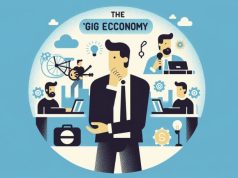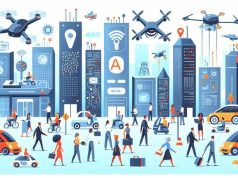Imagine an invisible force that insidiously undermines the health of millions of workers across the globe. It doesn’t come in the form of an infectious disease or a workplace hazard we can see or touch. It’s far more subtle, and it’s a byproduct of our modern work environment: the sedentary lifestyle. This hidden health cost of modern work threatens not only individual well-being but also the productivity and healthcare systems of our society.
In the vast expanse of today’s workplace, many professionals find themselves anchored to their desks for upwards of eight hours a day, peering into the glow of computer screens, ensnared in a web of emails, and shackled by the ceaseless demand for productivity. The ramifications of this sedentary work life are profound, triggering a rise in chronic conditions such as obesity, cardiovascular disease, and diabetes among workers—a silent epidemic unfolding in offices worldwide.
Our bodies were designed to move, yet the architecture of the modern office has engineered movement out of our workday. The consequences are grave: obesity levels have skyrocketed, and diseases once associated with old age are now presenting in younger populations. The entrenchment of inactivity in our work routines impacts not just the individual but reflects a deep-seated public health crisis that demands urgent attention.
Fortunately, there is a burgeoning awareness among organizations that the health of their workforce is directly tied to their bottom line. Initiatives like standing desks, workplace wellness programs, and mandated breaks for physical activity are seeping into corporate culture. Standing desks offer a simple solution to the ‘sitting problem,’ allowing workers to alternate between sitting and standing, thus reducing the risks associated with prolonged sedentary behavior.
Wellness programs have also gained traction, recognizing that a worker’s health extends beyond the physical. These programs prioritize mental and emotional well-being, offering resources for stress management, nutritional advice, and exercise regimens. More revolutionary, perhaps, are the companies institutionalizing breaks for physical activity, recognizing that short bursts of movement can counteract the perils of prolonged sitting, rejuvenate the mind, and foster a healthier workforce.
But how effective are these measures? The evidence is mounting that while they offer steps in the right direction, they are not a panacea. Compliance and engagement can be challenging to sustain, and the deep-seated nature of sedentary work demands solutions on both an individual and systemic level.
As we venture into the future, innovations in workplace design that encourage natural movement and incorporate technology to remind and incentivize workers to stay active throughout the day could be key. The integration of green spaces for walking meetings, the use of ergonomic furniture that adapts to the worker’s posture, and the implementation of gamified health challenges could pave the way for a new era of work where health and productivity are not mutually exclusive.
Remote work has further complicated this equation. While it offers unparalleled flexibility, the lack of structured office environments and the close proximity to home comforts can exacerbate sedentary habits. Yet, it also presents unique opportunities to embed exercise and movement seamlessly into the workday—whether through midday workouts or walking calls—if only these practices can be effectively encouraged and normalized.
In conclusion, the hidden health cost of modern work is a multifaceted challenge that requires an equally multifaceted response. From organization-led initiatives to personal responsibility, a concerted effort is required to combat this sedentary epidemic. As businesses and workers alike navigate this terrain, the triumphs and setbacks of integrating movement into our work lives will inform a broader understanding of how we can balance the scales between health and hustle in the modern age.




























